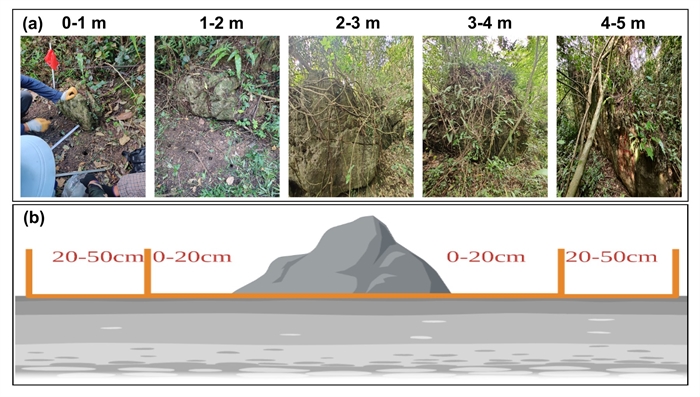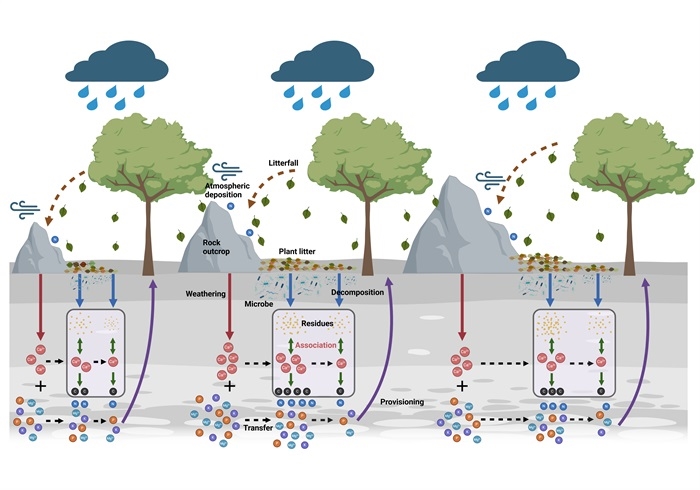How Rock Outcrops Affect Soil Functions in Mountain Ecosystems
Rock outcrops resulting from a variety of geological processes are common in mountain ecosystems, exerting a significant impact on soil functions in diverse ways. However, the effects of rock outcrop size and distance from the outcrop on soil functions remain poorly understood.
In a recent study published in Functional Ecology on 31 March 2025, researchers led by Prof. WANG Kelin from the Institute of Subtropical Agriculture of the Chinese Academy of Sciences shed light on how the size and proximity of rock outcrops influence soil functions in these mountain ecosystems. The research team conducted a field study in mountainous karst regions of southwest China, a landscape characterized by numerous prominent rock outcrops. A total of 31 rock outcrops of varying sizes were selected and categorized into five diameter classes: 0-1 m, 1-2 m, 2-3 m, 3-4 m, and 4-5 m (FIGURE 1a). Plant litter and soil samples were collected at two distances (0-20 cm and 20-50 cm) (FIGURE 1b). Soil functions were assessed in five aspects, including nutrient provisioning, microbial growth efficiency, soil organic matter decomposition, nutrient cycling, and plant-microbe symbiosis.
According to the researchers, soil functions were significantly higher closer to the rock outcrops (FIGURE 2). This phenomenon is attributed to the ‘funneling effect’, rock outcrops capture dust, rainwater, plant litter, as well as nitrogen and phosphorus from atmospheric deposition, creating ‘hotspots’ of nutrients and favorable habitat near rocks. These ‘hotspots’ involve continuous interactions and feedback loops among rocks, soils, microorganisms and plants, including nutrient deposition, microbial activity and plant growth.
Interestingly, the size of the rock outcrops played an important role in determining soil functions, with a hump-shaped relationship (FIGURE 2). Medium-sized rock outcrops (2-4 meters in diameter) had the strongest positive impact on the surrounding soil functions. These rocks release more calcium through weathering, which stabilizes soil organic carbon and boosts soil functions. Smaller rocks provided fewer resources to the surrounding soil, while excessively large rocks limited the accumulation of nutrients and organic matter, leading to a weaker impact on soil functions.
These findings highlight how rock outcrops create localized ‘hotspots’ where soil functions are enhanced, and how the effects of these outcrops vary depending on their size and proximity. ‘Future studies and ecosystem models should incorporate both rock size and distance to improve the accuracy of ecosystem assessments and management strategies.’ said Prof. ZHAO Jie, the corresponding author of the study.
Contact: Jie Zhao
Email: jzhao@isa.ac.cn

FIGURE 1 Determination of different sizes of exposed rocks (a) and sampling to varying distances from rocks (b) (Image by LI Jiangnan).

FIGURE 2 Conceptual model revealing the mechanisms of rock outcrop effects on soil functions in mountain ecosystems (Image by LI Jiangnan).
Download attachments: